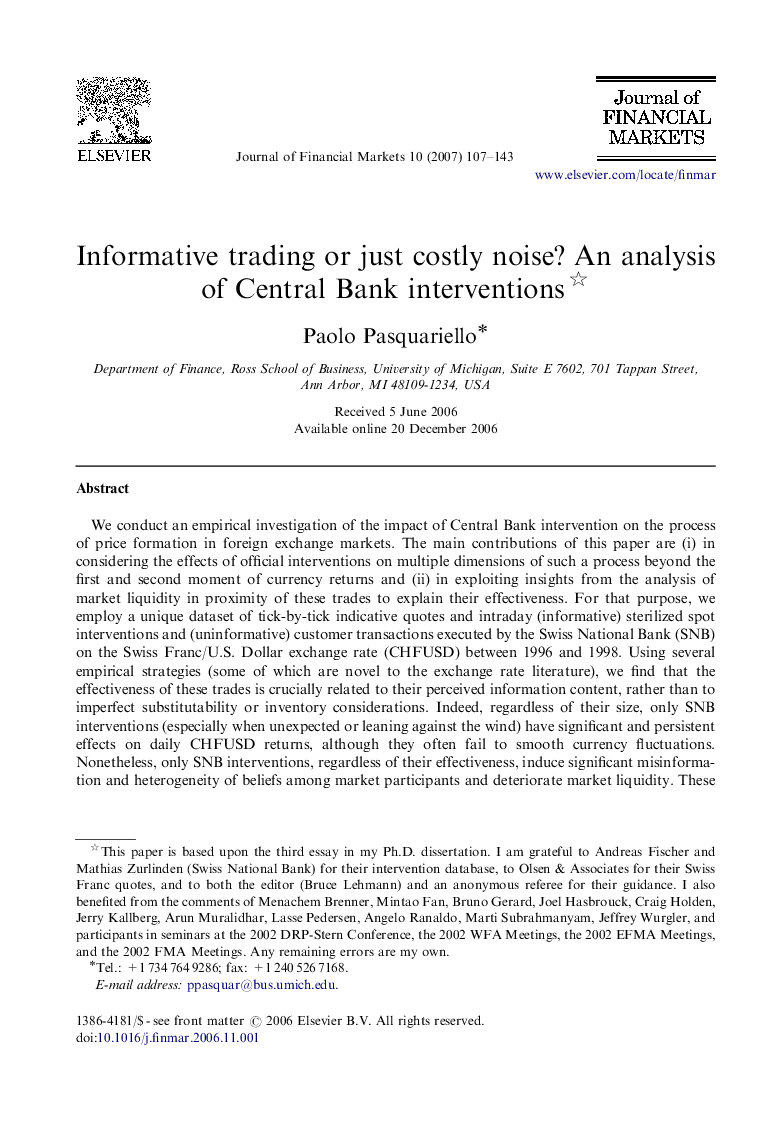| Article ID | Journal | Published Year | Pages | File Type |
|---|---|---|---|---|
| 961176 | Journal of Financial Markets | 2007 | 37 Pages |
Abstract
We conduct an empirical investigation of the impact of Central Bank intervention on the process of price formation in foreign exchange markets. The main contributions of this paper are (i) in considering the effects of official interventions on multiple dimensions of such a process beyond the first and second moment of currency returns and (ii) in exploiting insights from the analysis of market liquidity in proximity of these trades to explain their effectiveness. For that purpose, we employ a unique dataset of tick-by-tick indicative quotes and intraday (informative) sterilized spot interventions and (uninformative) customer transactions executed by the Swiss National Bank (SNB) on the Swiss Franc/U.S. Dollar exchange rate (CHFUSD) between 1996 and 1998. Using several empirical strategies (some of which are novel to the exchange rate literature), we find that the effectiveness of these trades is crucially related to their perceived information content, rather than to imperfect substitutability or inventory considerations. Indeed, regardless of their size, only SNB interventions (especially when unexpected or leaning against the wind) have significant and persistent effects on daily CHFUSD returns, although they often fail to smooth currency fluctuations. Nonetheless, only SNB interventions, regardless of their effectiveness, induce significant misinformation and heterogeneity of beliefs among market participants and deteriorate market liquidity. These externalities always translate into higher, economically significant transaction costs borne by investors.
Related Topics
Social Sciences and Humanities
Economics, Econometrics and Finance
Economics and Econometrics
Authors
Paolo Pasquariello,
